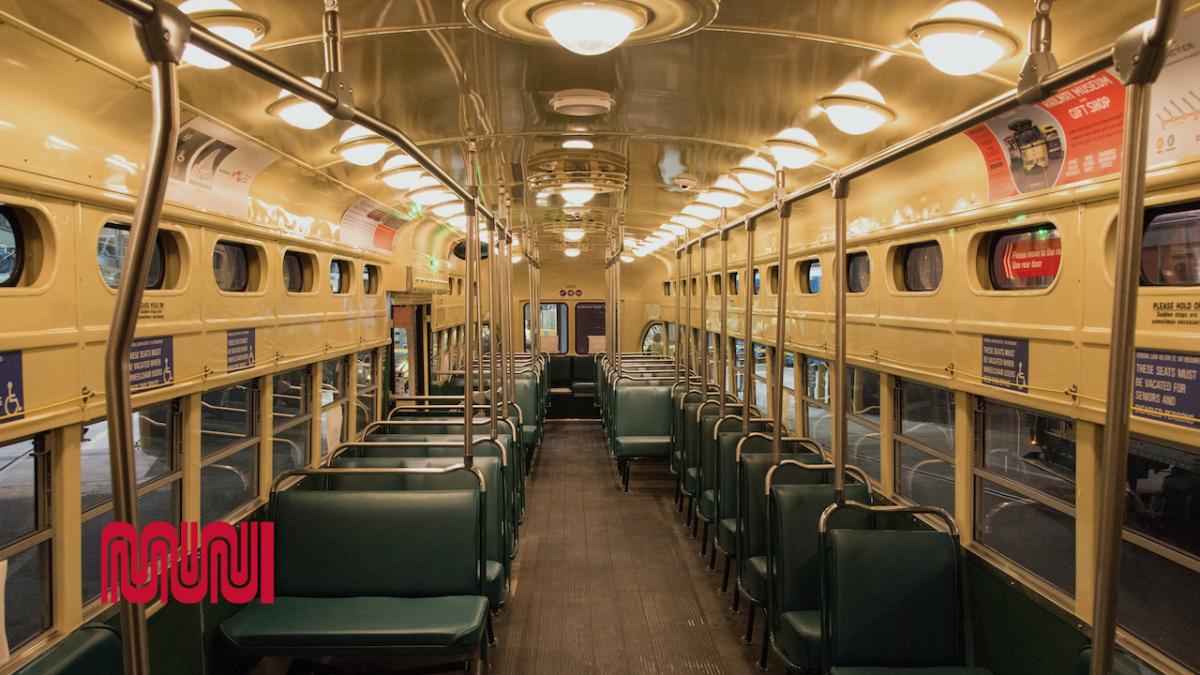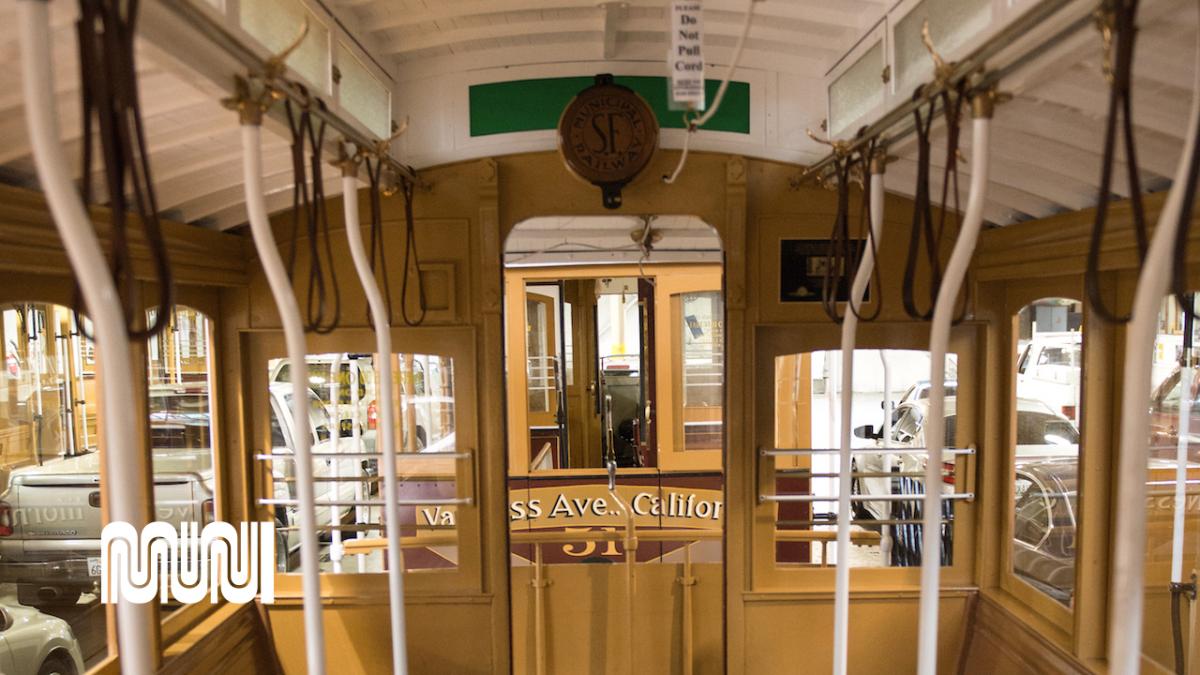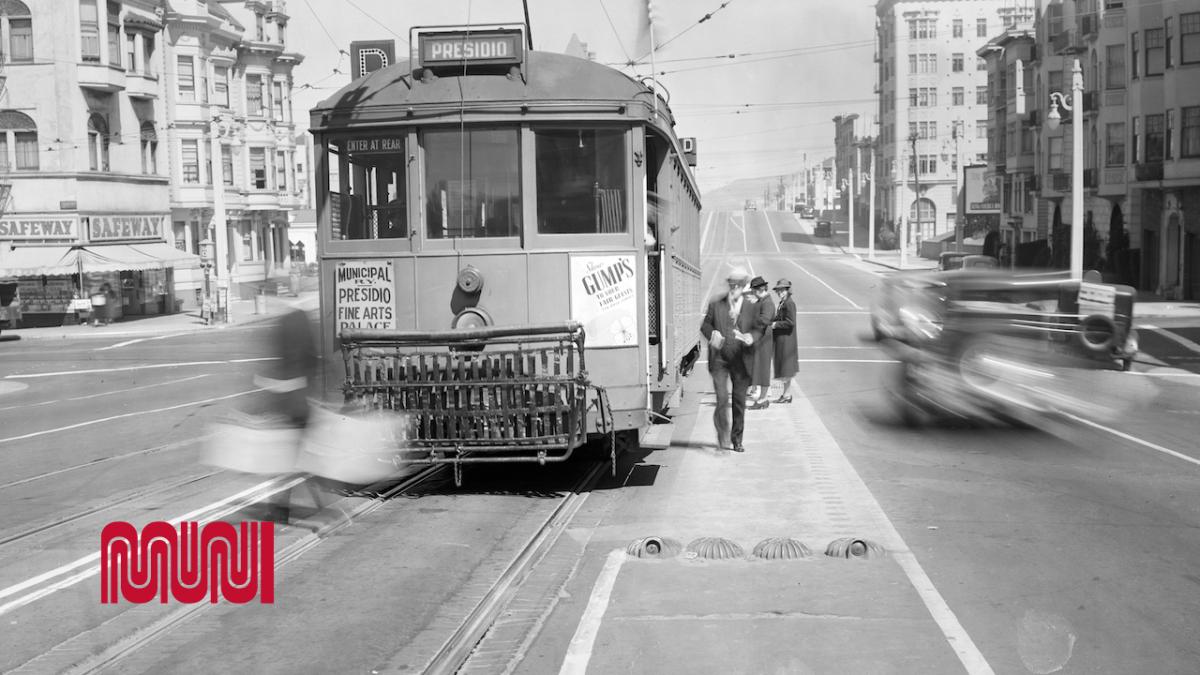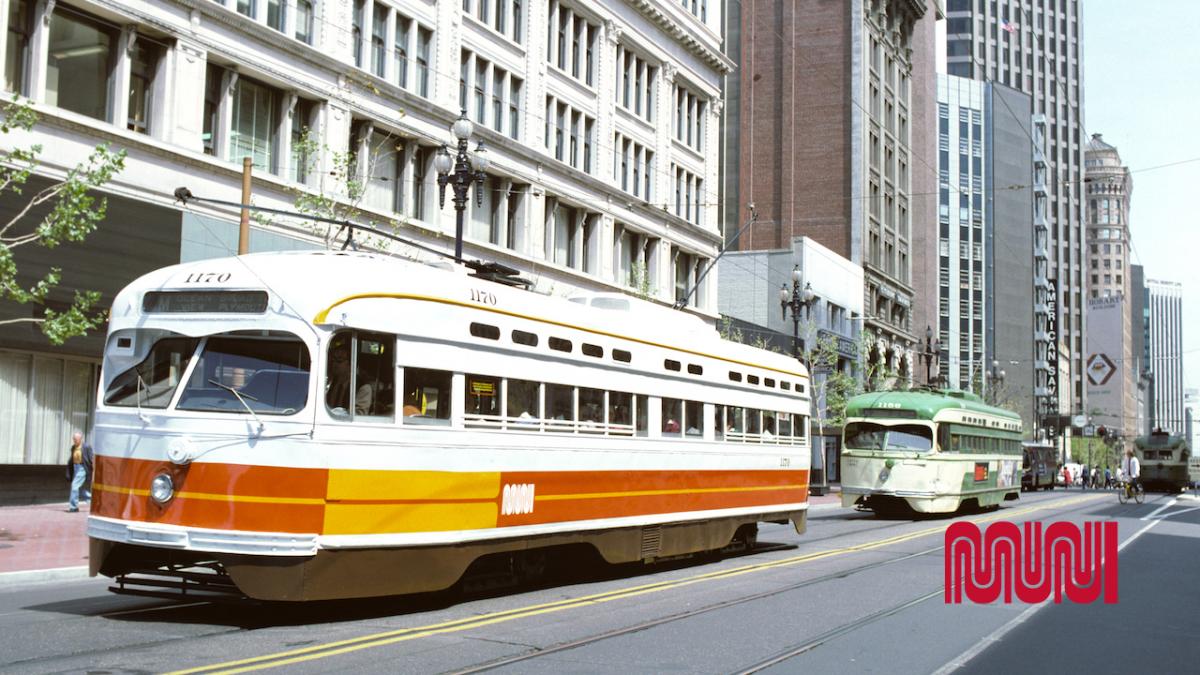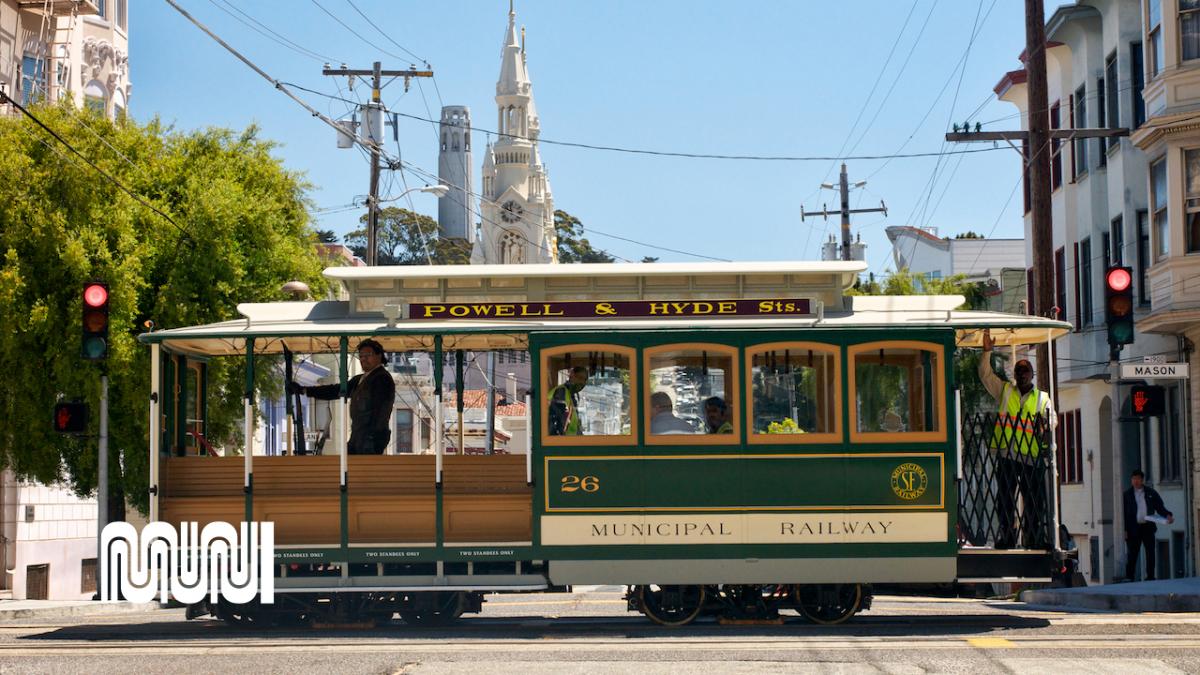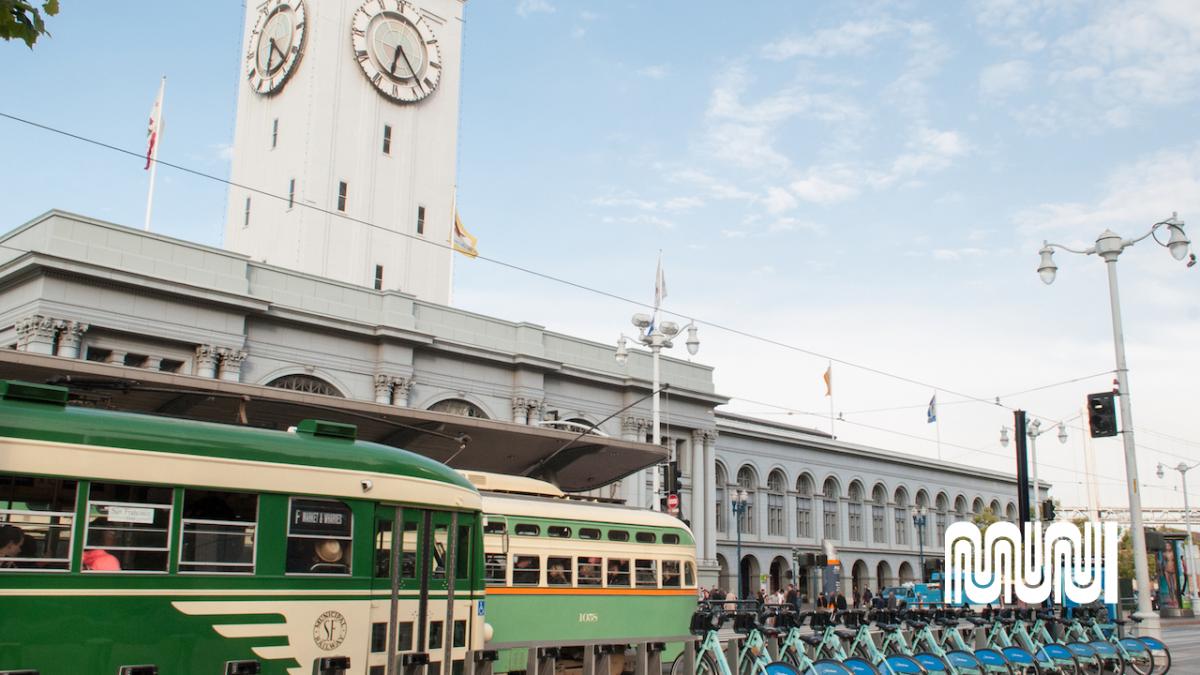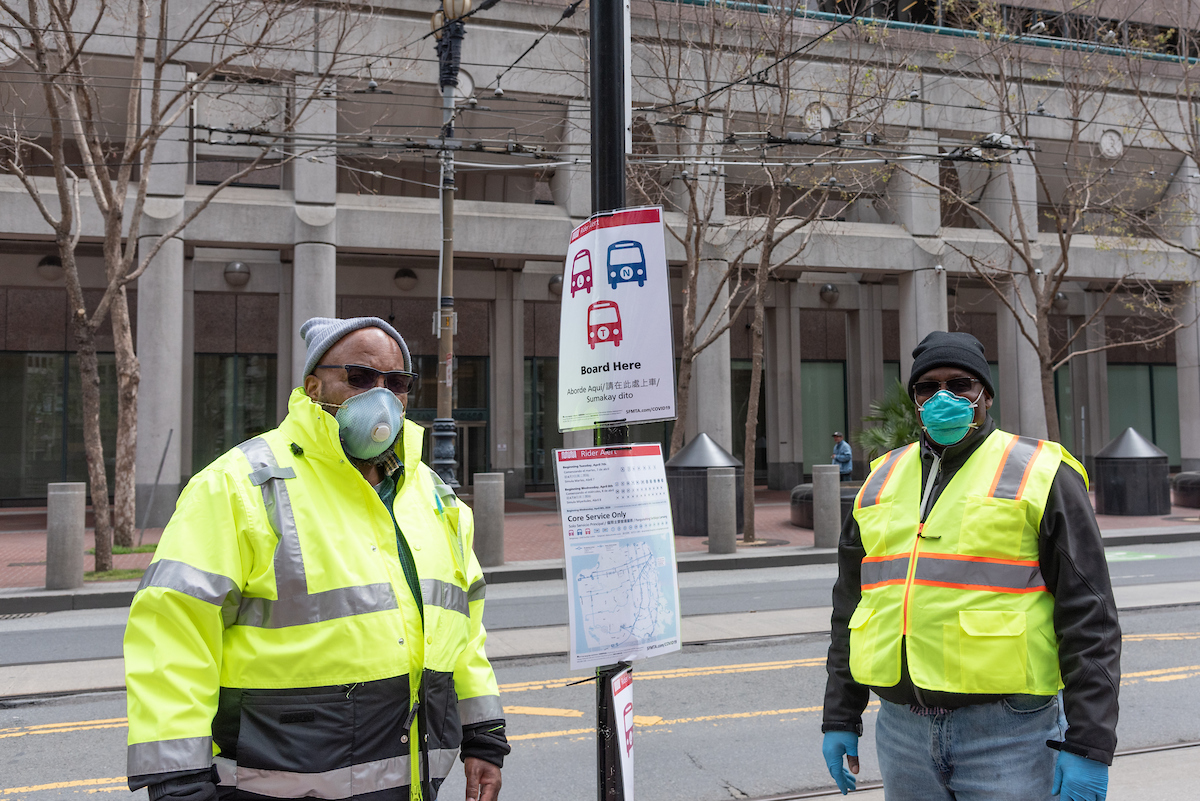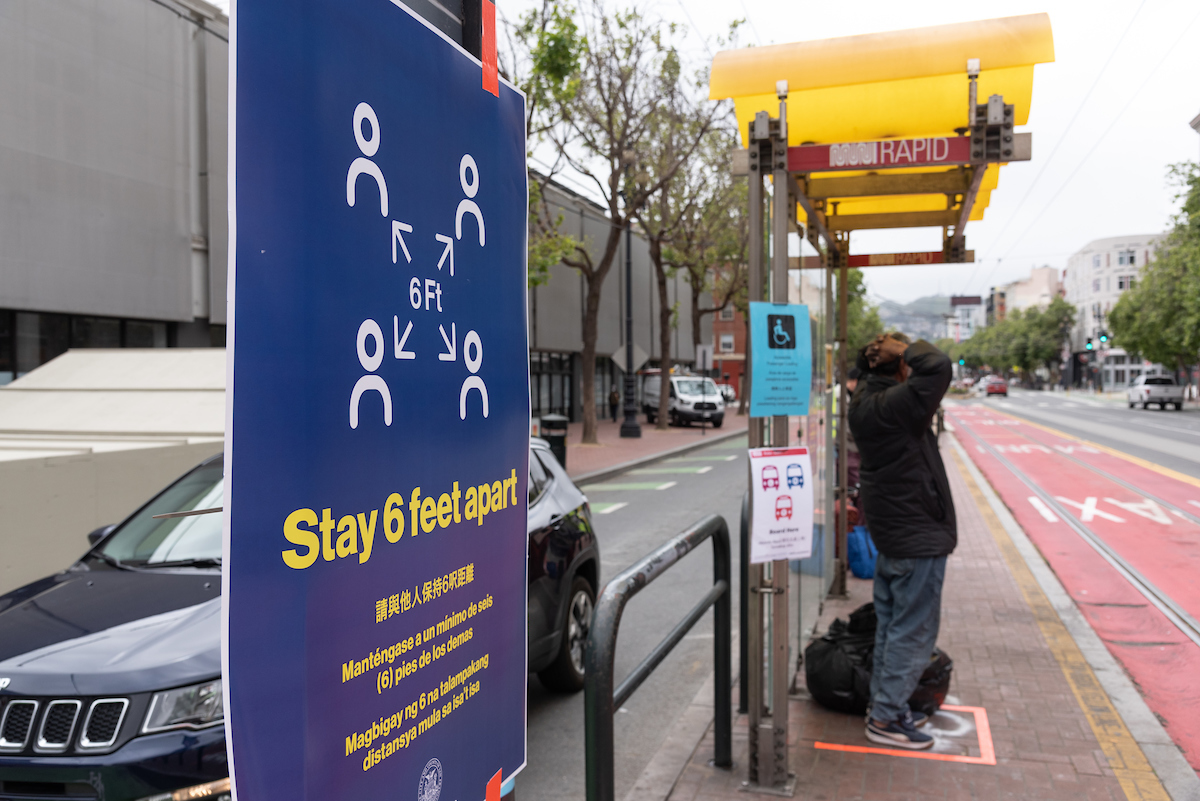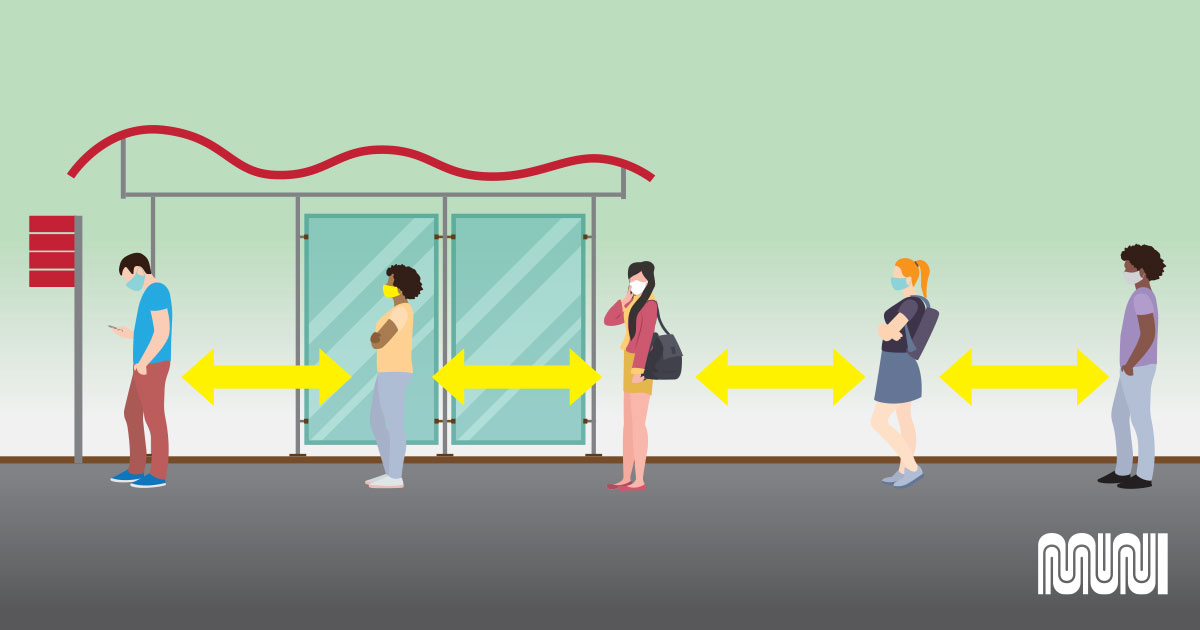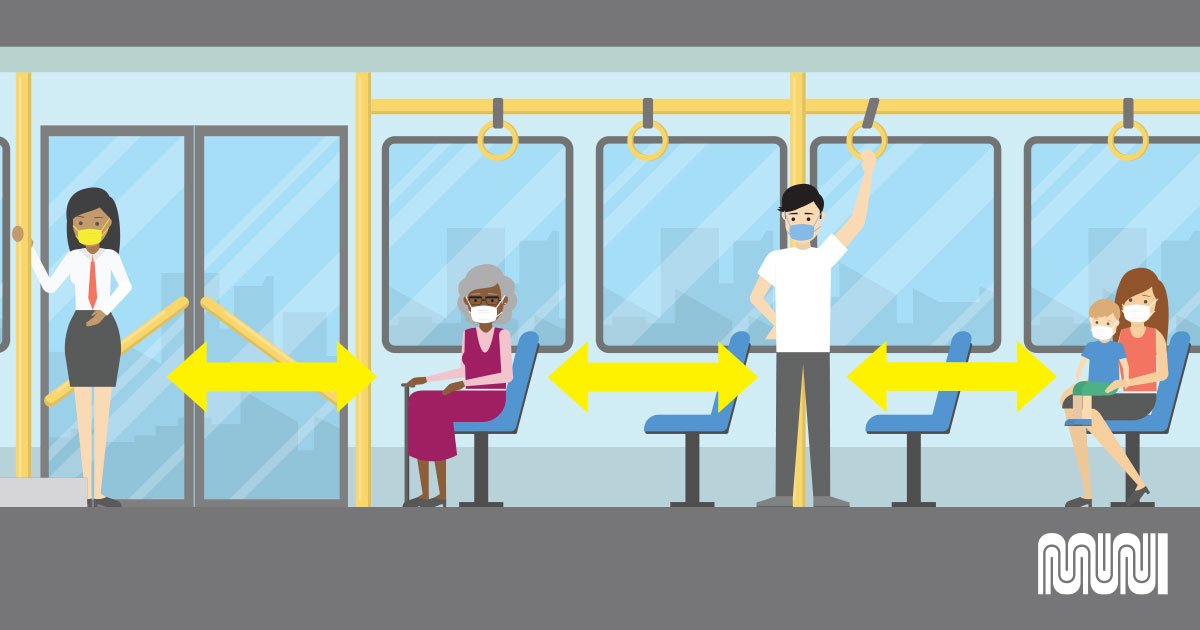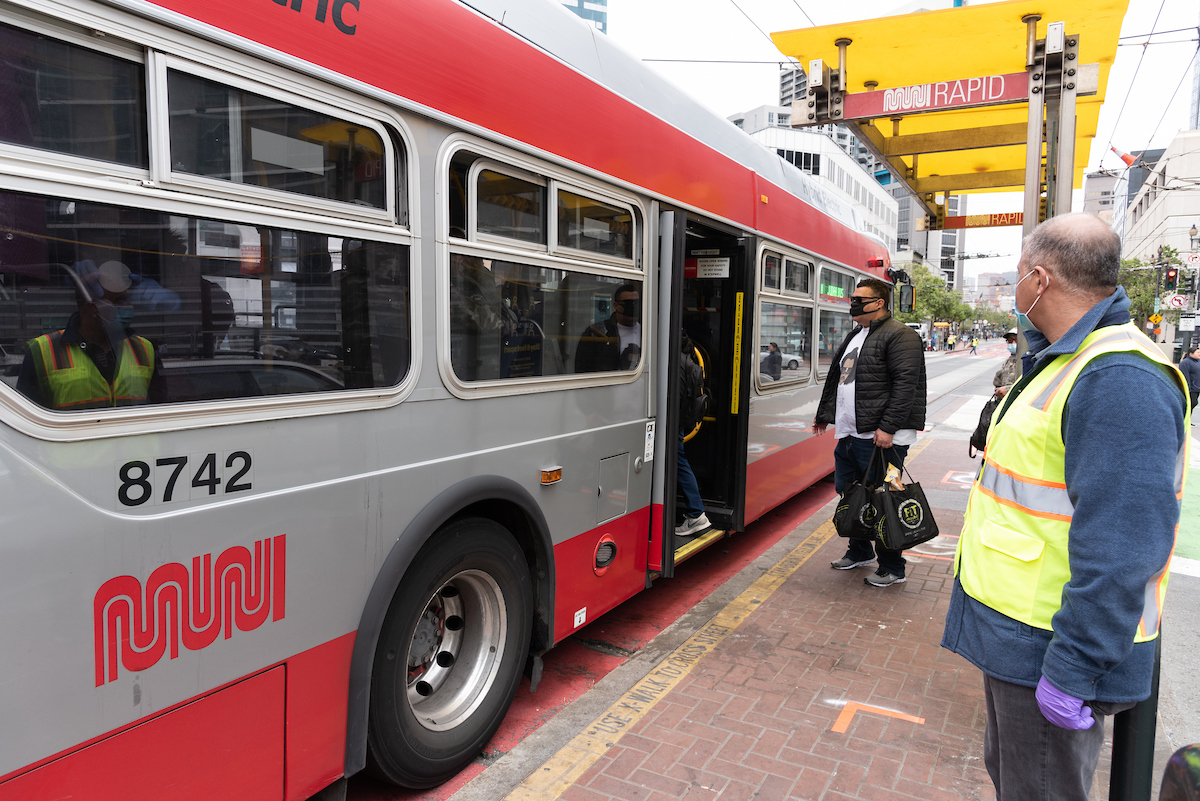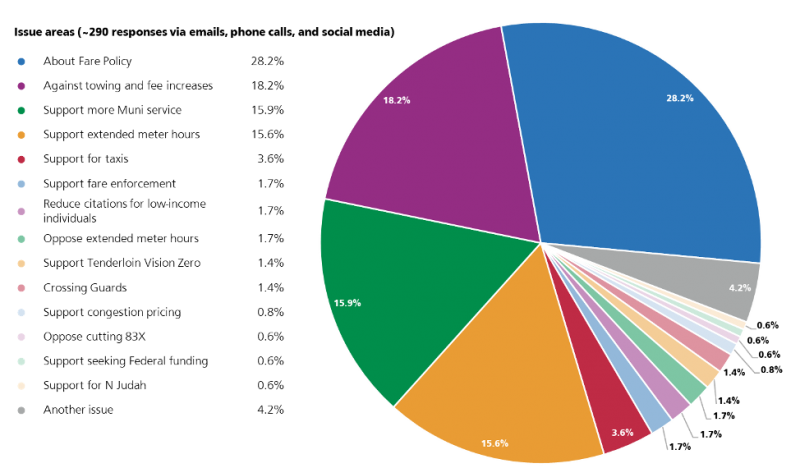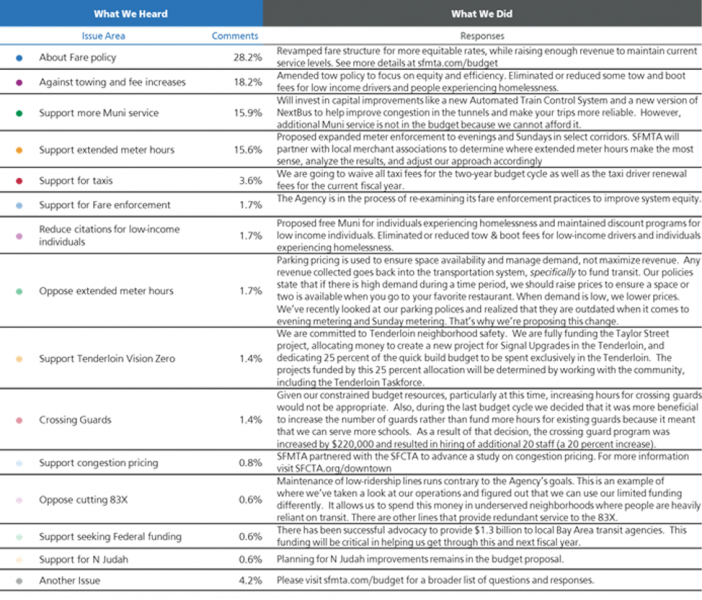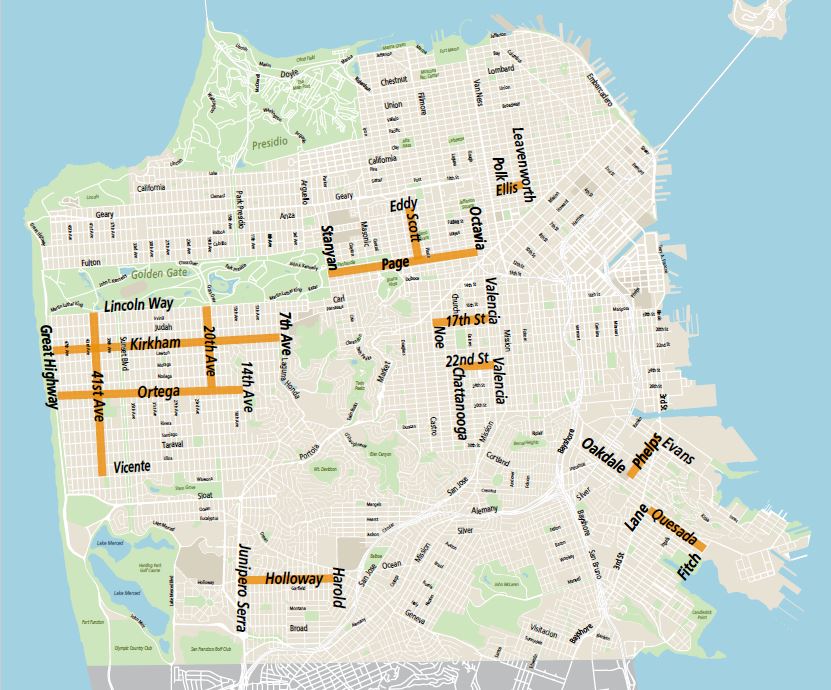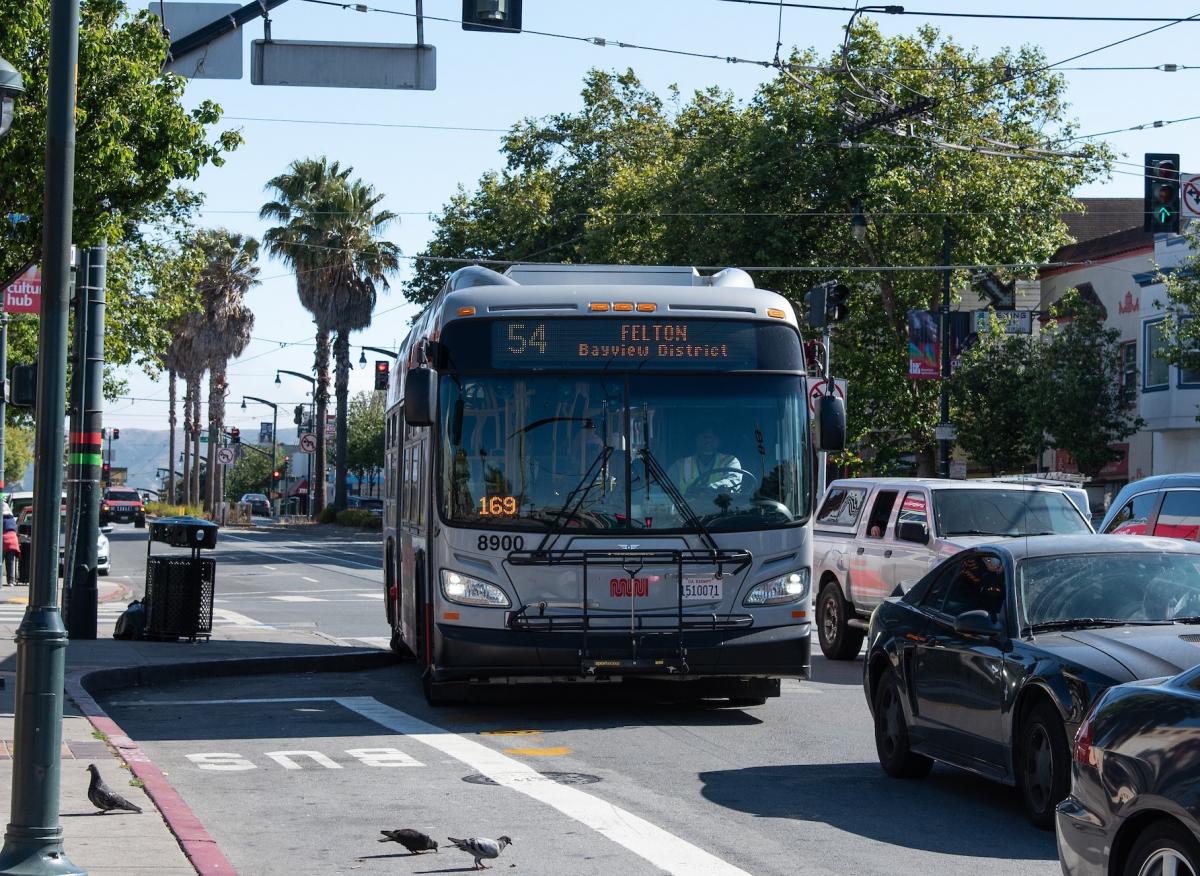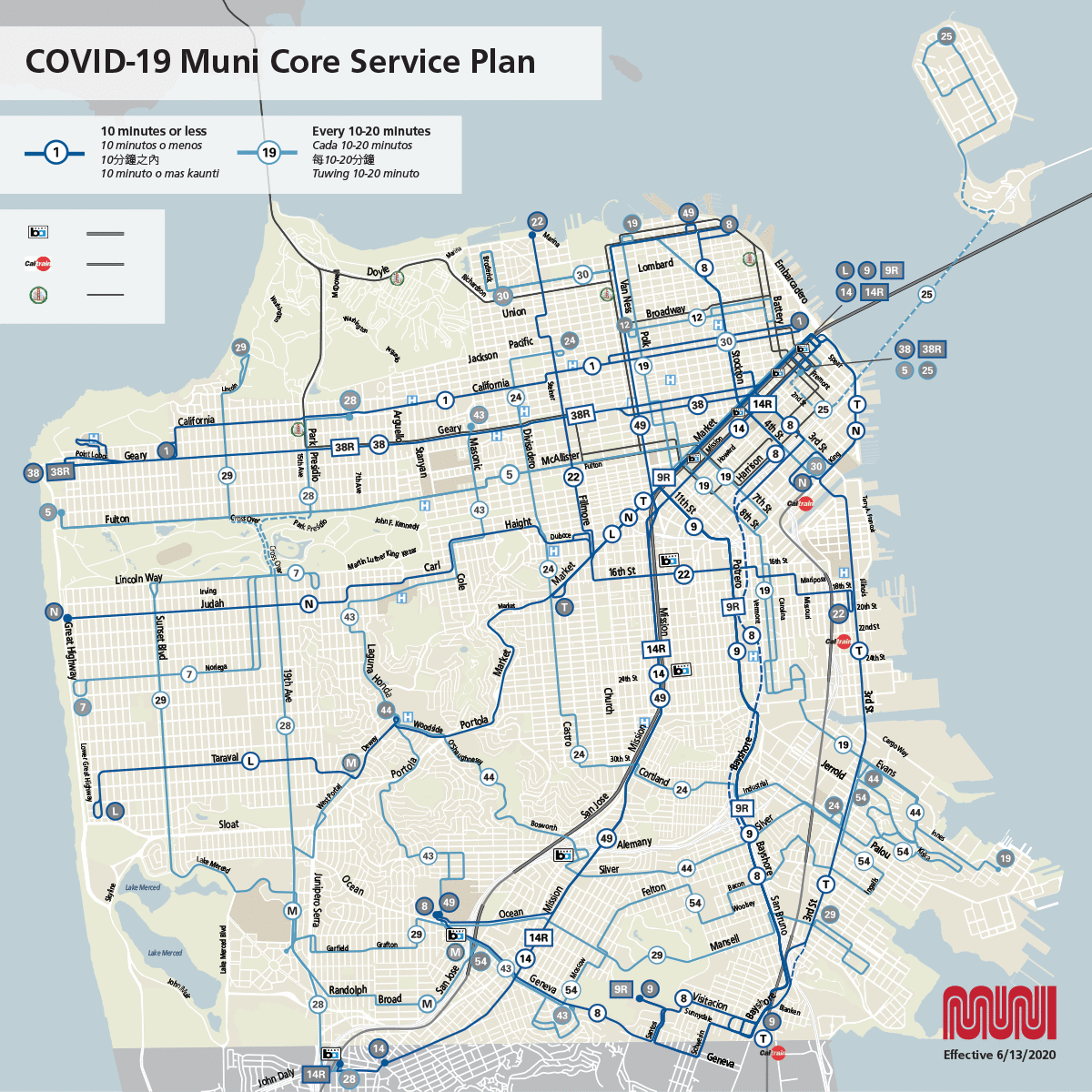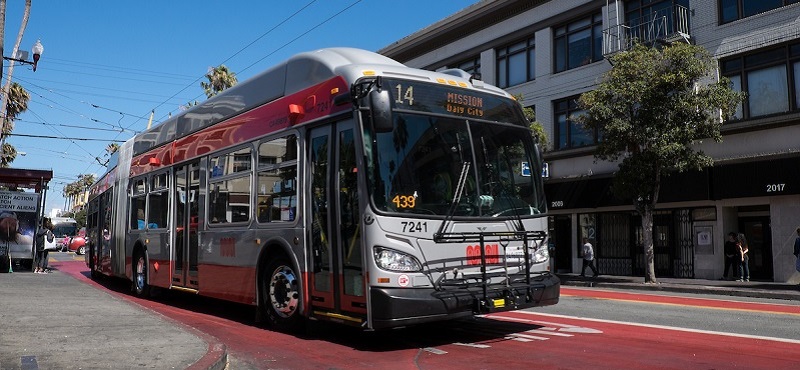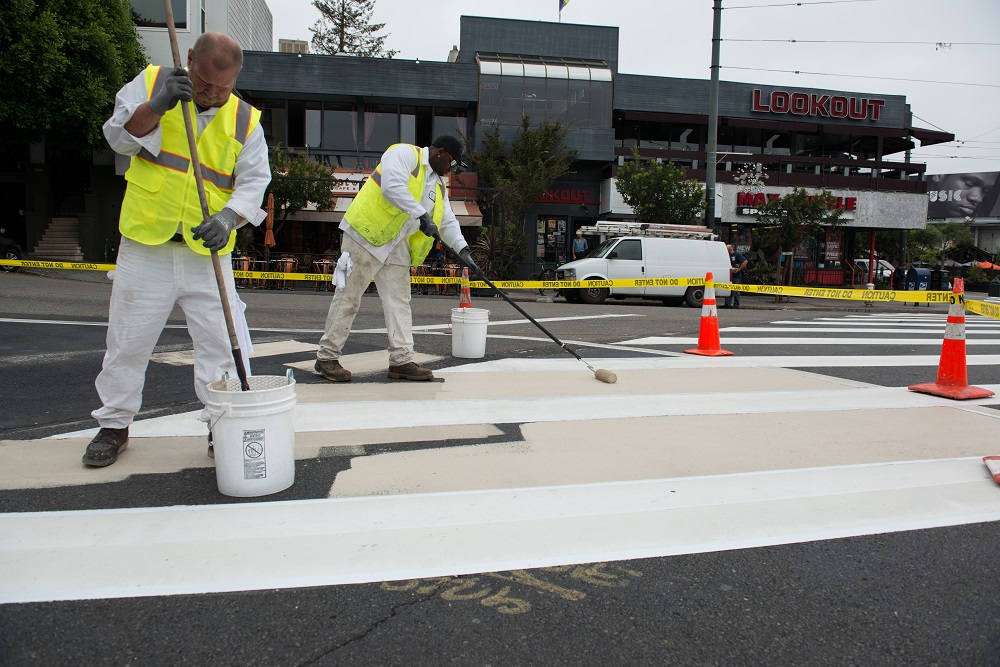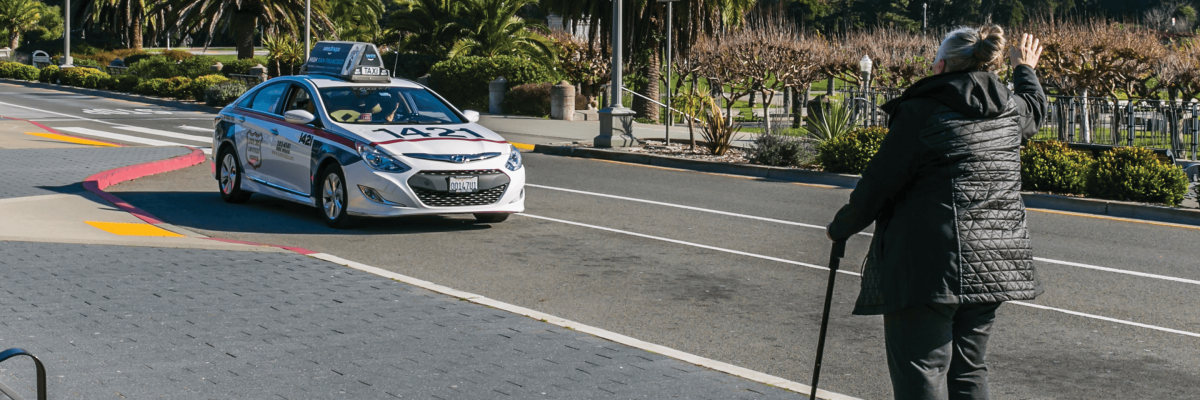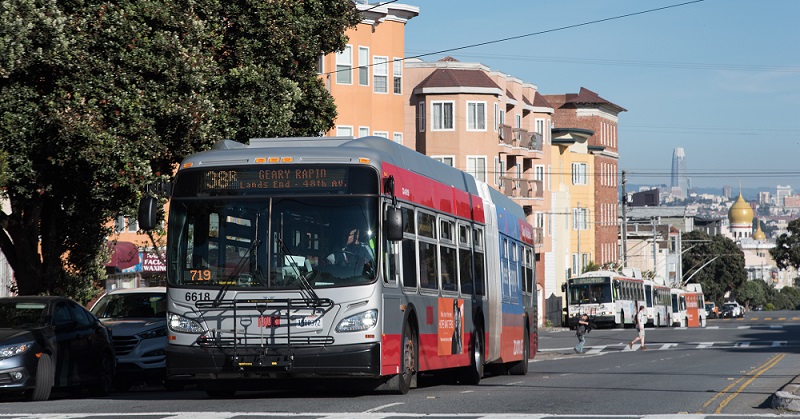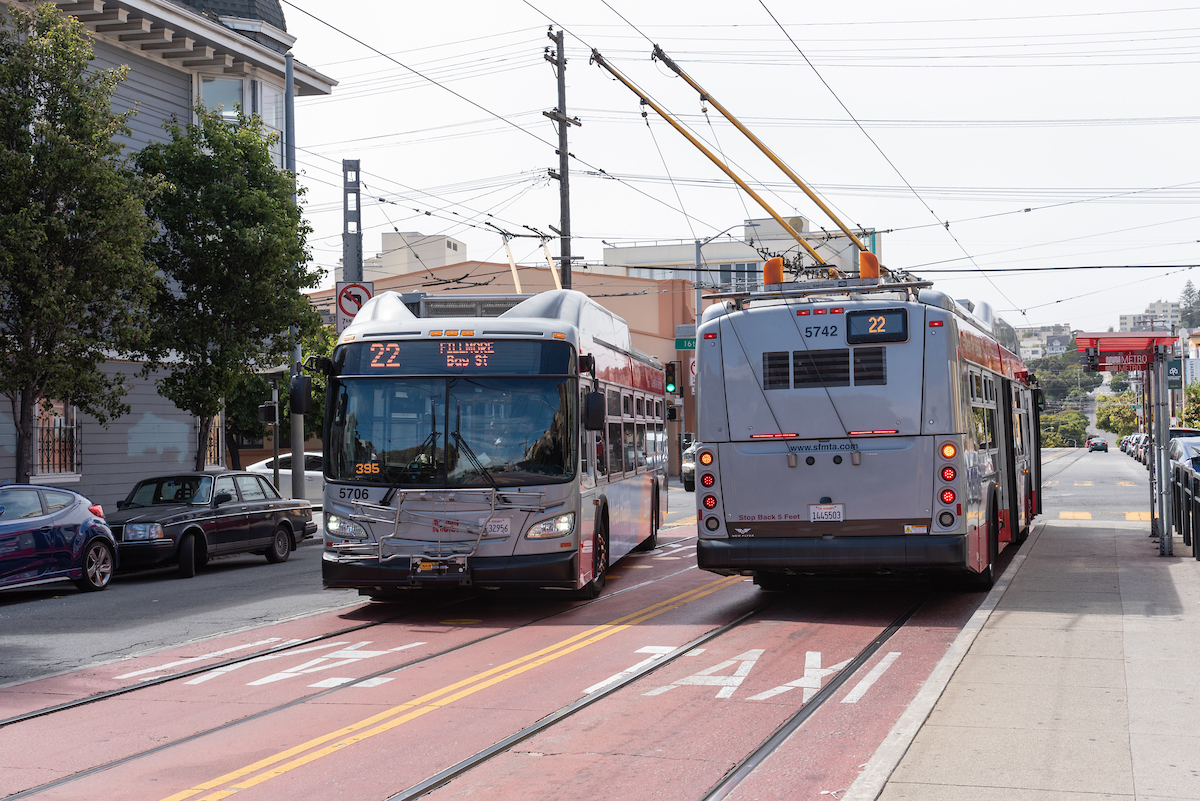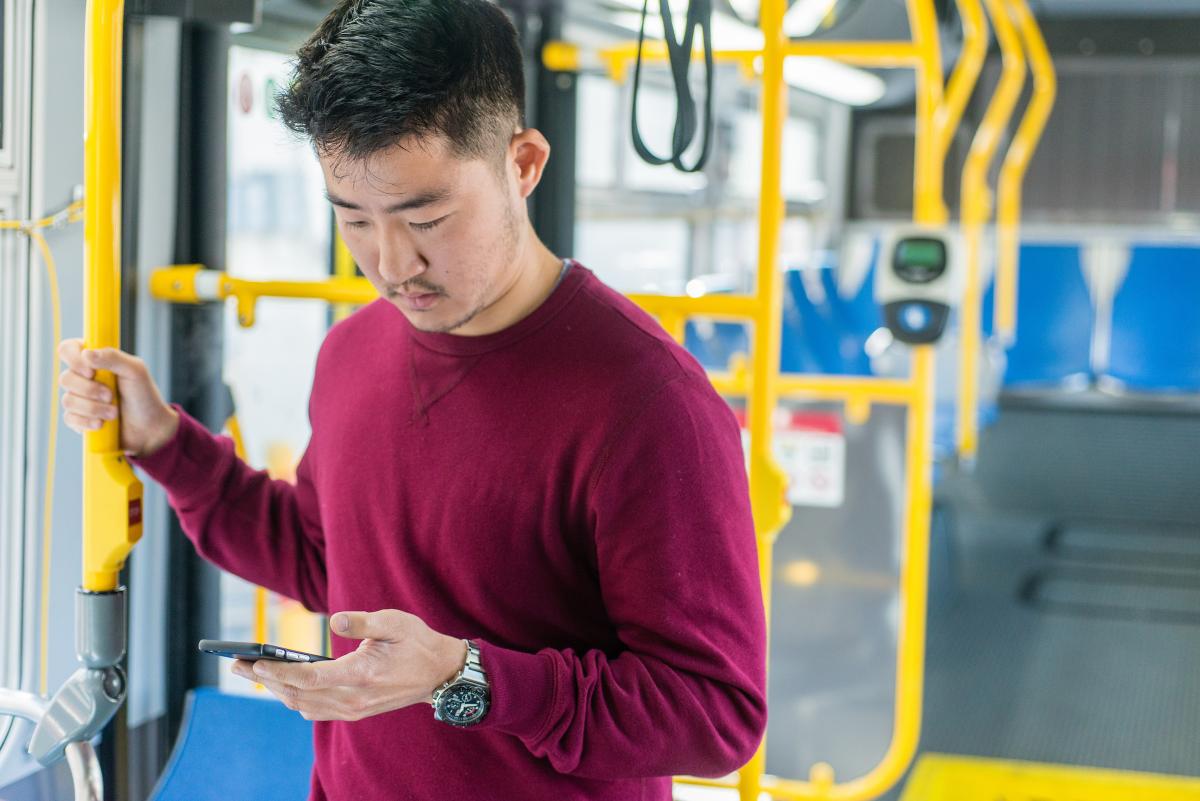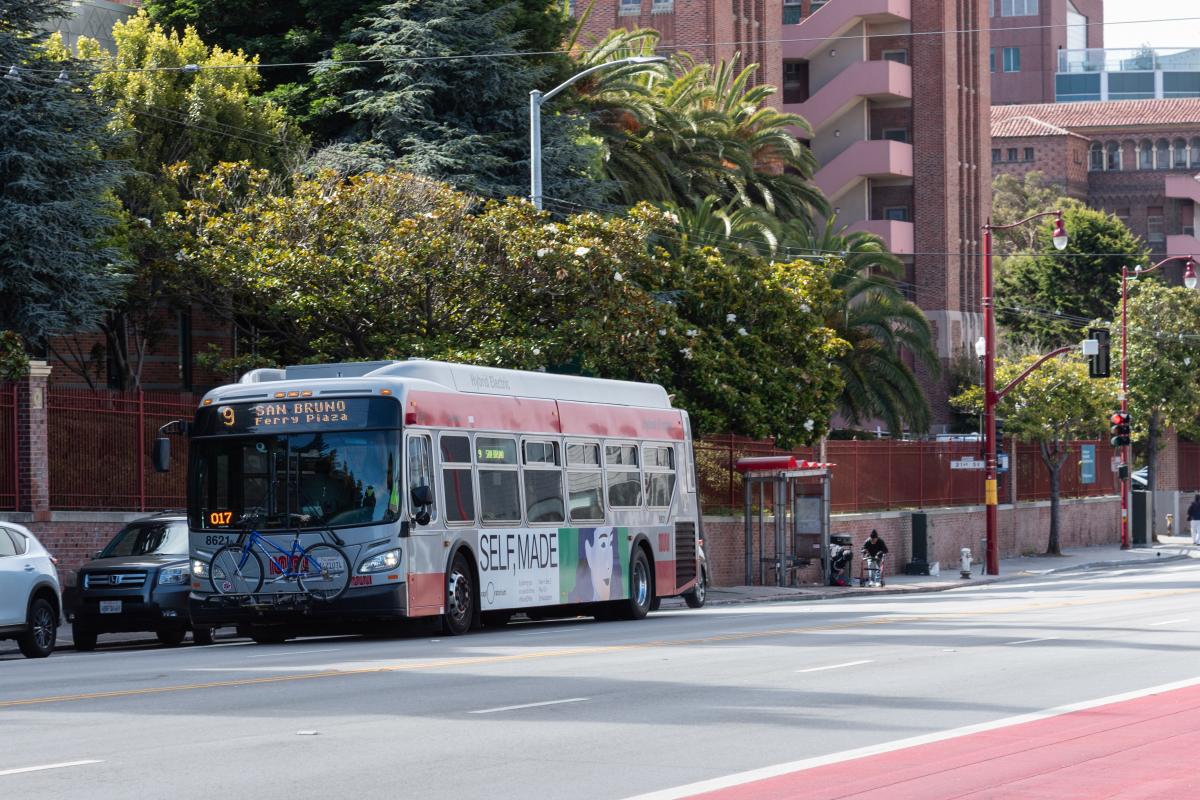SFMTA Budget: Policy Objectives and Funding Priorities
By
The Coronavirus pandemic and current shelter-in-place order have changed our daily routines. The timeline for the SFMTA budget approval has been extended to August 1st. However, we are moving forward with the budget because we need a reference point for where the Agency intends to go. As such, we are taking steps to ensure we continue to engage in a thoughtful and comprehensive community process in light of the current circumstances. If you would like to comment on the budget, please email
sfmtabudget@sfmta.com, call (415) 646-2222, or post on our
Facebook page or
Twitter using #sfmtabudget. You can also visit our
budget webpage. The SFMTA Board of Directors will be voting on the budget during their regularly
scheduled hearing on Tuesday, April 21st.
This is the third in a series of blogs exploring the San Francisco Municipal Transportation Agency’s (SFMTA’s) budget process and proposal for Fiscal Years 2021-2022. The first blog provided a high-level overview of the budget process, while the second discussed the state of our projected revenue and expenditures and how they inform budget development. This post will discuss our policy objectives and funding priorities for Fiscal Years 2021-2022 based on the latest proposals that SFMTA staff have put forward. Future blog posts will include content on:
- Overview of our outreach
- The adopted Consolidated budget and what it includes
Introduction
The previous blog post described the foundation of the Operating and Capital Budgets; the funding necessary for daily operations, equipment, and infrastructure maintenance. This post will discuss the policy proposals & funding priorities above and beyond current service levels. Funding the current service levels comprise most (98%) of the budget. These generally include: employee salaries and benefits, professional service contracts for services, like the maintenance of our bus shelters, that aren’t directly provided by SFMTA staff, and materials and supplies like bus tires or fuel. It is imperative that we continue providing these services to meet the Agency’s Strategic Plan Goals:
- Create a safer transportation experience for everyone
- Make transit and other sustainable modes of transportation the most attractive and preferred means of travel.
- Improve the quality of life and environment in San Francisco and the region.
- Create a workplace that delivers outstanding service
As noted in the previous blog post, the Agency faces a structural deficit, meaning that our projected revenue will not keep up with the projected expenditures necessary to provide daily service. So, while the suite of policy proposals discussed in this blog will help us improve and expand services, they will also help us address this deficit. These proposals are rooted in our values of creating a safe transportation system, advancing equity, decarbonizing, and creating a workplace culture that delivers excellent customer service.
Fare Policy
Our budget process began in January and, over the past three months, we have worked hard to ensure an open discussion with the public about San Francisco’s needs, priorities, and the trade-offs that would be required; and to gather feedback through multiple channels so they could be involved in and inform the outcome.
We launched a comprehensive, multilingual public outreach campaign at the beginning of the budget process to gather and consider public input on the budget and the proposed fare changes. As part of that outreach campaign, we received over 300 questions, comments, and concerns, many of which were focused on fares.
We began with our Automatic Indexing Policy, increasing all of our fares as a result of increases in both Consumer Price Index (CPI) and Labor Costs. The implementation of a fare indexing policy allows Muni to raise fares incrementally, rather than holding constant in good times, and increasing above cost of living to help cover budget deficits in economic downturns. Allowing fare revenue to rise in relationship to increased operating costs also allows the SFMTA to invest in the system and increase service.
Some people have questioned whether the SFMTA should raise fares at all, especially given the fact that fares have doubled in the last 10 years.
While this is true, it is important to note that for the previous 10 years, Muni fares were held constant while the economy was strong. Moreover, fares represent a significant percentage of our budget (almost 20 percent). Although the current public health emergency creates uncertainty about our future revenues, we project that not raising fares would mean a loss of $15 million dollars annually. While this seems like a relatively small amount in the context of our overall budget, it does mean that the agency would need to cut programs and services by that amount. For example, because our transit operating expenses are about 60% of the total budget, a revenue loss of $25 million, proportionally reducing all programs and services at the SFMTA, would mean a 3 to 5% transit service reduction and would remove up to 140 operators from service.
Cutting transit service and/or other programs is a bad idea at a time when: we’re seeing significant population growth in the region and one of the Mayor’s top priorities is to build more housing; the need to support sustainable modes of transportation is undeniable given the climate change we’re experiencing; and the need to maintain our infrastructure in a state of good repair is the long-term fiscally responsible thing to do.
So, not increasing fares is NOT a strategic option that considers the trade-offs between short-term gains and long-term consequences.
In order to create a more equitable system, we must prioritize better service and more accessible service through our low- or no-fare programs. Our goal is to create a budget that recognizes the trade-offs that we face and best advances our values. This is why we are proposing free Muni for all youth and for individuals experiencing homelessness.
In response to calls to pause fare increases or to eliminate fares altogether, and with an eye on our funding gap and keeping proposals revenue neutral, we developed two equity-driven proposals that asks San Franciscans who are able to pay, to pay a little more to help our more vulnerable populations who are reliant on transit for employment and other essential needs like healthcare and getting kids to school.
Both fare proposals provide free Muni for all youth under the age of 19 and for individuals experiencing homelessness, and do not raise fares for Cash Fare Single Rides or Reduced Fare Single Rides.
The Equity Monthly Option places the cost burden largely on monthly pass holders to avoid increases in the cash fare and adjusts our Lifeline Pass to be increased by Social Security Income (SSI), rather than inflation (CPI).
The Equity Clipper Option places the cost burden on the monthly pass holders and on riders paying the full single ride fare electronically by reducing—but not eliminating—the discount between the electronic fare and the cash fare.
We are recommending the Equity Clipper Option to our Board, as it distributes the cost burden between a number of fare mediums and supports a more overall equitable fare policy. If this option is approved by our Board:
- About 72% of all riders would be impacted by fare increases, based on the 2017 on-board survey, but not all fares would be increased equally.
- All proposed fare increases would impact 55% of minority riders and 34% of low-income riders.
- All proposed fare decreases would benefit 63% of minority riders and 57% of low-income riders.
- Low-income riders use cash fares at higher rates than they use electronic fares. Cash fares for Adults, Seniors, and Disabled single rides will remain the same.
- Low-income riders make up only 28% of our Monthly Adult Passes, compared to 53% of our overall ridership.
- Free Muni will also continue to be available for Seniors and People with Disabilities, for which we have set a much higher threshold to align with MOHCD at 100% of Bay Area Median Income ($123,150 for a family of four).
- Lifeline monthly passes are available for those riders who are at 200% of the federal poverty level. Fares are discounted at half off regular fares and will be increased at the lower SSI rate: $1 for monthly passes and $0.10 for single rides per fiscal year, a smaller increase.
- In addition, beginning this year, the SFMTA will be offering a 50% discount on single ride fares to meet the needs of those who can’t afford, or may not need, a monthly Lifeline pass as part of the SMART regional pilot program.
- We will also be studying the option of moving from monthly passes to fare capping to enable those who cannot afford the up-front cost of a monthly pass to pay as they go.
Fare Proposals: April 2020 Selected
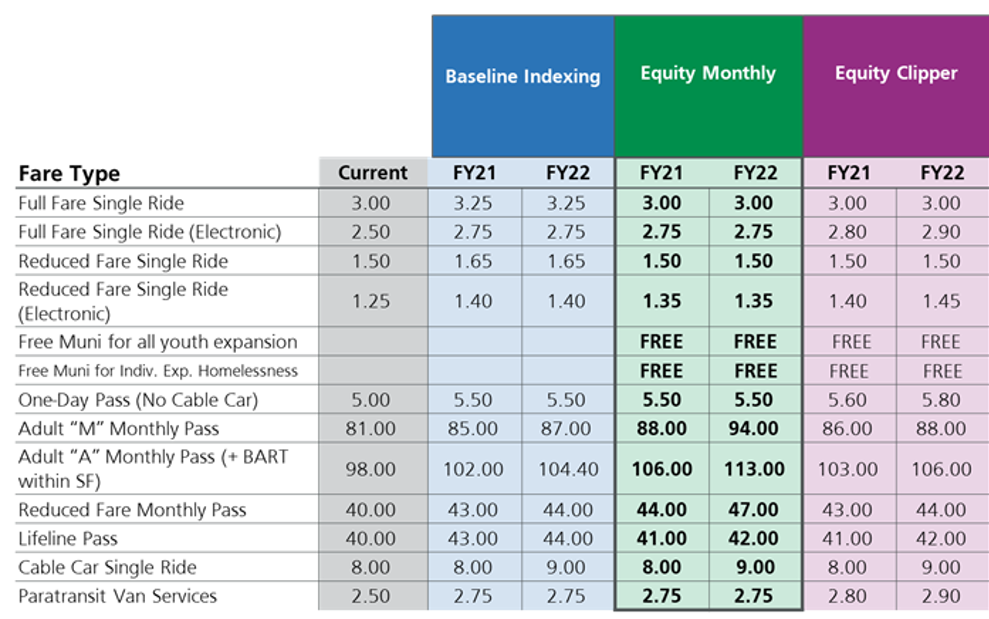
Accessible text for Table #1
Transit Service
Based on the recommendations of the Muni Reliability Working Group, the Agency is proposing to hire 88 full time employees for system management, maintenance, and planning. Primarily, this includes 30 Transit Operators to support the opening of Central Subway. Other critical staff will:
- Support transit operations,
- Increase training functions that increase reliability and support trainers and supervisors,
- Provide strategic vehicle maintenance,
- Support subway reliability, continue regular extended maintenance shutdowns, and
- Support Central Subway testing and opening
These proposals represent only an initial investment in the Muni Working Group’s entire set of recommendations. Due to the previously discussed structural deficit, we have scaled back proposals for transit supervision and near-term maintenance improvements and are not recommending a 6% service expansion by FY 2022.
Curb and Congestion Management
In addition to fares, SFMTA is also recommending policy changes to parking pricing. These proposals arose from community feedback, supported by data on parking space availability, that the Agency needs to increase efforts to manage the curb and congestion. Our parking policy proposals have several main components:
1. Modernize Parking Meter Hours: Evening Option and Sunday Option.
Parking pricing is used to manage demand and ensure space availability, not maximize revenue. Any revenue collected goes back into the transportation system, specifically to fund transit.
Since 2011, the SFMTA has operated a demand-responsive parking pricing system: if demand is high, we raise prices to ensure a space or two is available when you go to your favorite restaurant (which hopefully will be soon when the Shelter in Place Order is lifted). When demand is low, we lower prices.
We recognize that increased parking prices could mean less demand from more price-sensitive drivers, many of whom are low income. As part of any proposal we will need to address equity concerns, including maintaining access by continuing to provide quality alternatives, like transit.
We’ve recently looked at our parking polices and realized that they are outdated when it comes to evening metering and Sunday metering. We know that the demand for parking in commercial corridors during the evenings is high. That’s why we are proposing extending the time that meters are enforced beyond the standard 6 pm end time.
We won’t be doing this city-wide immediately; we’ll partner with local merchant associations to determine where extended meter hours make the most sense and see how it works, particularly given the current economic challenges related to the pandemic.
We’re also considering enforcing meters on Sundays, where we’d follow a similar community- and data-driven process to make sure it works for our residents, businesses, and visitors. In 2014, San Francisco's meters charged on Sundays--as a result, parking availability increased significantly, which allowed folks visiting our commercial neighborhood to find parking.
2. Raise the maximum variable parking meter rate by $1 per year to a maximum of $9 per hour in FY 2021 and a maximum of $10 per hour in FY 2022.
The current maximum rate for demand responsive pricing is $8 per hour[1]. This policy is a response to the demand for parking and ensures that parking spaces are regularly accessible to commercial corridor patrons and disabled placard users during business hours. A relatively small percentage of meters in the City operate at the maximum hourly cap.
In addition to updating parking pricing policies, the Agency also recommends the hiring of 66 more Parking Control Officers (PCOs) to manage congestion. This will be a 20% increase of our current staff of 300 PCOs who are responsible for enforcing several safety and quality of life violations like double parking, school zones, bike lanes, and blocked driveways. They are also responsible for traffic control, known technically as a ‘fixed post’. Fixed post is when a PCO stands at an intersection and directs traffic. This is a critical job for reducing congestion and increasing safety by, for example, making sure cars don’t block the box. Just as importantly, many fixed-post PCOs facilitate movement of transit. So, adding more PCOs will increase our ability to:
- Support multi-modal safety and neighborhood/commercial corridor needs;
- Keep the city moving by managing traffic congestion and supporting transit operations; and
- Respond to increased demand for services.
Transit Safety
Driven by overwhelmingly positive public feedback, the Agency is proposing to hire 20 more employees for the Muni Transit Assistance Program (MTAP). MTAP staff are community members who are trained in conflict resolution, and ride on specific transit lines with high incidences of graffiti and youth conflict. They focus on supporting our schools and young people, by working to diffuse and deter any conflicts or acts of vandalism and assist transit operators as needed. MTAP staff do not enforce fare payments, their purpose is to further the safety of youth and other Muni riders.
Vision Zero
The City and County of San Francisco adopted Vision Zero in 2014, committing city agencies to build better and safer streets, educate the public on traffic safety, enforce traffic laws, and adopt policy changes that save lives. The goal of this collaborative, citywide effort is to create safer, more livable streets as we work to eliminate traffic fatalities.
Supporting the Capital Budget, voters approved the use of Prop D Ride-Share Business Tax as a revenue source, with $15 million estimated annually for street safety projects. Staff are proposing expanding existing programs by using the funds evenly for:
- the new Quick-Build Program, especially protected bicycle facilities or projects on the High Injury Network; and
- signal hardware upgrades, especially signal modifications (new mast arms, poles, visibility) in Communities of Concern[2] and/or on the High Injury Network[3]
Additionally, staff are recommending that the Agency ensures ongoing funding and support of the Vision Zero Education and Outreach Program and Safe Routes to School in the Operating Budget. These programs focus on encouraging behavior change through education, complementing engineering programs and enforcement efforts. They also support the City’s children and families by building a coordinated framework to provide safe and effective options for school transportation. Creating a consistent funding source will increase outreach and education campaigns on safe driving behaviors and maintain the importance of realizing our Vision Zero goal of eliminating traffic fatalities.
Internal Capacity
While SFMTA has grown and added staff in recent years, we have not hired enough Human Resources (HR) employees to keep up with hiring needs. Not including Operators (who have a different recruitment pipeline), the Agency currently has 824 vacant positions out of 4,270, with one analyst for every 118 vacant positions. This has contributed to a number of issues, including that it takes 165 days on average to fill a typical position. To begin addressing this and other HR concerns, the Agency is proposing to add 13 positions to our Human Resources Division to support increased administrative needs, talent acquisition, examinations, leave management, and merit and comparability analyses.
In addition to meeting HR needs, SFMTA staff are also focused on strengthening morale and wellness through enhanced employee engagement and support, and a more diverse, inclusive, and equitable workforce.
To achieve these goals, the Agency is proposing to create an Office of Race, Equity and Inclusion to address inequities in our workplace and services, prioritize those who have the most need in every decision, and ensure just outcomes for all people.
Over the past month, COVID-19 has significantly impacted our community and dramatically altered the SFMTA’s financial outlook. Although this sudden change had an impact on our budget proposal, we maintained as many of the policies and proposals developed with help from public input as we could. However, we will be monitoring both our revenue and our expenditures closely, and we are committed to staying within our means. We can expect that the financial outlook will change over time and we will be making adjustments to the budget accordingly. We will report regularly to the public and the SFMTA Board during the course of the budget period on measures that we are taking to manage our finances.
We at the SFMTA want to thank you all for your invaluable input. You truly helped to shape the budget we will bring to our Board of Directors on April 21st. We encourage you all to tune in to SFGovTV to watch the meeting. You can also call in during the public comment portion of the meeting to share your opinions directly with the Board.
Coming up next in our series: Overview of our outreach
[1] Only 0.02% of metered streets are currently at the maximum $8, so this change only applies to a very narrow set of meters.
[2] San Francisco’s Communities of Concern include a diverse cross-section of populations and communities that could be considered disadvantaged or vulnerable now and in the future. Communities of Concern can have high levels of households with minority or low-income status, seniors, people who have limited English proficiency, people who have disabilities, and more.
[3] The 13% of all SF streets where 70% of severe and fatal collisions with pedestrians and cyclists occur
Published April 16, 2020 at 03:25PM
https://ift.tt/2VykEKl
